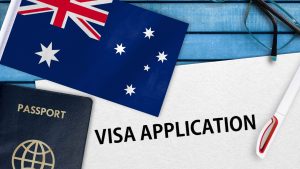Understanding the right skilled migrant visa to apply for in Australia can feel like navigating a labyrinth. With multiple visa subclasses, points-tests and sponsorship streams, it helps to clearly map out the categories of visa and eligibility criteria. This guide provides a data-driven, practical overview of key categories of skilled migration visas in Australia and a step-by-step checklist for each.
Overview of Australia’s Skilled Migration Program
The Department of Home Affairs (Australia) defines a range of visas allowing skilled workers to live and work in Australia. These include short-stay, temporary/provisional and permanent skilled visa categories. Immigration and citizenship Website
Key elements:
- Occupation must often be on a Skilled Occupation List. Immigration and citizenship Website+1
- Many visas are points-tested (for independent applicants) or rely on employer/state/territory nomination.
- The process often begins with an EOI (Expression of Interest) via the SkillSelect system. Immigration and citizenship Website
Major Categories of Skilled Migrant Visas
Here are the main visa categories for skilled migrants:
1. Permanent Independent Skilled Visa (Subclass 189)
What it is: A points-tested visa for skilled workers not sponsored by an employer, state or territory.
Category relevance: Ideal for skilled migrants who have an occupation in demand and want permanent residency rights. Immigration and citizenship Website
- Occupation on relevant Skilled Occupation List
- Submit EOI via SkillSelect
- Reach minimum points (65 points is a common threshold)
- Skills assessment from relevant assessing authority
- English language proficiency
- Meet health & character requirements Immigration and citizenship Website+1
2. Skilled Nominated Visa (Subclass 190)
What it is: A permanent visa for skilled workers nominated by an Australian state or territory.
Category relevance: For skilled migrants supported by a state/territory, offering additional points and a pathway to permanent residency. Move to South Australia
Eligibility Checklist:
- Meet standard skilled visa criteria (as above)
- Obtain nomination from a state/territory
- Occupation on that state’s Skilled Occupation List
- Agree to live and work in that state for a set period
3. Skilled Work Regional (Provisional) Visa (Subclass 491)
What it is: A provisional visa for skilled workers nominated by a state/territory (or sponsored by a family member in regional Australia) to live and work in regional Australia for up to five years, with a pathway to permanent residency. NSW Government
Eligibility Checklist:
- Meet skilled visa base criteria (points, occupation, skills assessment)
- Receive nomination or sponsorship for the regional stream
- Live and work in eligible regional area
- After certain period/conditions may be eligible for a permanent visa (eg Subclass 191)
4. Employer-Sponsored Skilled Visas
What it is: Visas where an employer nominates a skilled migrant to fill a vacancy that cannot be filled locally. There are multiple subclasses under this category (e.g., Employer Nomination Scheme subclass 186) though the general skilled migration article focuses on independent/nominated streams. Australian Skilled Migration
Eligibility Checklist:
- Employer has approved nomination
- Applicant’s skills/qualifications match nominated occupation
- Meet English, health, character criteria
- May include work experience requirements
How to Choose the Right Category of Visa
The “right” category depends on your specific situation. Here’s a quick decision-tree:
- Do you have employer sponsorship? → Consider employer-sponsored visa.
- Do you have state/territory nomination but no employer? → Consider Subclass 190 or Subclass 491 (regional) depending on whether you want regional residency.
- No sponsorship, independent skilled worker? → Subclass 189 is the main option if you meet the points and occupation list.
- Are you willing to live and work in regional Australia? → Subclass 491 may offer pathway to permanent residency via regional stream.
Also confirm your occupation is listed on the relevant Skilled Occupation List — these lists differ depending on visa and region. Immigration and citizenship Website
Important Documents & Skills Assessment
Before applying for any skilled migrant visa, you’ll likely need:
- A skills assessment from the authorised assessing body for your occupation (for example Australian Computer Society (ACS) for ICT occupations) ACS
- Proof of English language proficiency
- Documents verifying your identity, employment history, qualifications
- Police certificates and medical examinations for character and health checks Immigration and citizenship Website
- Evidence for your claims (points, work experience, qualifications)
Key Terms You Should Know
- EOI (Expression of Interest): Submit via SkillSelect to register your interest for certain visa categories. Immigration and citizenship Website
- Points test: Many visas require you to reach at least 65 points based on age, English ability, work experience, education, etc. Australian Skilled Migration
- Skilled Occupation List (SOL): A list of occupations eligible for skilled visas. Your nominated occupation must be on the appropriate list. Immigration and citizenship Website+1
- State/Territory nomination: Some visa streams require you to get a nomination from an Australian state or territory government (for Subclass 190, 491).
Why Choose Skilled Migration in Australia?
Australia remains a popular destination for skilled migrants because of:
- Strong economy and demand for specialised skills
- Clear pathways to permanent residency in many visa categories
- High standard of living and multicultural environment
- The option to bring family members (in many visas)
- Flexibility for permanent residence, study and work once visa granted
Integrating Your Career & CV Strategy
As you plan your migration, ensuring your CV, qualifications and career narrative are targeted matters. At DreamShift, we specialise in crafting CVs and migration-ready documentation that highlight your skills, experience and eligibility for visa categories. Our goal: Guarantee you a job interview in 60 days.
Whether you’re preparing for an employer-sponsored visa or applying independently through a points-tested stream, having a strong CV, well-documented experience and a clear migration narrative enhances your visa chances and future job prospects in Australia.
Book a Call with DreamShift for tailored advice on aligning your CV and migration strategy.
Final Thoughts
Understanding the categories of visa available to you as a skilled migrant in Australia is key to making an effective migration plan. From independent streams (Subclass 189) to state-nominated (190) and regional pathways (491), each has distinct eligibility criteria. The critical steps: ensure your occupation is listed, complete a skills assessment, hit the required points, abide by nomination/sponsorship conditions, and prepare strong documentation.
With the right category chosen and your CV & profile aligned, you’re well-positioned for success in your Australian journey.







